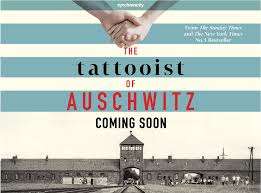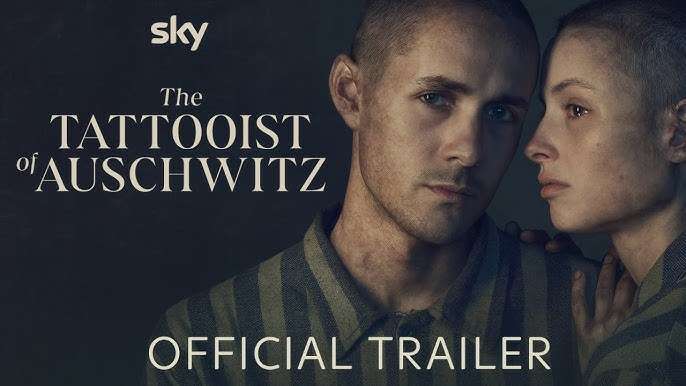The Tattooist of Auschwitz (originally published in 2018, with various editions through 2022) is a historical fiction novel by Heather Morris, based on the real-life experiences of Holocaust survivor Ludwig “Lale” Sokolov. The book tells the extraordinary story of Lale, a Slovakian Jew who was forced to work as the Tätowierer (tattooist) in Auschwitz-Birkenau, marking prisoners with their dehumanizing identification numbers. Amidst the horrors of the concentration camp, Lale falls in love with a fellow prisoner, Gita Furman, and risks everything to keep her alive.
The novel has been both widely praised for its emotional impact and criticized for historical inaccuracies and fictionalized elements. This review will examine its strengths, weaknesses, and the ethical complexities of blending fact and fiction in Holocaust narratives.
Plot Summary: Love in the Shadow of Death
Lale Sokolov arrives at Auschwitz in 1942 and, due to his linguistic skills, is assigned the “privileged” position of tattooing incoming prisoners. Though his job spares him from hard labor, it forces him to inflict pain on others daily—a moral burden he carries heavily.

One day, he tattoos the arm of a young woman, Gita, and is immediately struck by her resilience. The two form a secret romance, exchanging stolen moments and words of hope despite the constant threat of death. Lale uses his position to smuggle extra food and medicine to Gita and others, relying on black-market trades with sympathetic civilians and even some SS officers.
As the war nears its end, the couple is separated during the camp’s evacuation. Lale survives multiple death marches and eventually reunites with Gita after liberation, beginning a new life together.
Strengths: A Powerful, Emotional Narrative
1. A Unique Perspective on Survival
Unlike many Holocaust stories that focus solely on suffering, The Tattooist of Auschwitz explores the moral ambiguities of survival. Lale’s role as the tattooist makes him both a victim and, in some ways, a collaborator—a tension that adds depth to his character. His internal struggle with guilt (“How can I do this and still call myself a good man?”) is one of the book’s most compelling aspects.

2. A Love Story Defying Darkness
The central romance between Lale and Gita is undeniably moving. Their relationship serves as a testament to humanity’s ability to find hope in the bleakest circumstances. Morris writes their bond with tenderness, making their moments of stolen intimacy feel like small acts of defiance against the Nazis.
3. Accessible Holocaust Literature
For readers unfamiliar with the depths of Auschwitz’s brutality, The Tattooist of Auschwitz serves as an entry point into Holocaust history. Morris’s straightforward prose makes the story digestible without trivializing the horrors.
4. Based on a True Story
Knowing that Lale and Gita were real people who survived and later married adds emotional weight. Their post-war life (briefly touched upon in an epilogue) reinforces the book’s themes of resilience and love’s endurance.
Weaknesses: Historical Accuracy & Narrative Flaws

1. Fact vs. Fiction Controversies
Historians and Auschwitz memorial researchers have criticized the novel for inaccuracies, including:
-
Misrepresentation of camp logistics (e.g., Lale having a private room, which prisoners would not have had).
-
Overly sympathetic SS officers (some scenes suggest Nazis helped Lale, which is highly unlikely).
-
Timeline errors (certain events are compressed or altered for dramatic effect).
While Morris acknowledges taking creative liberties, some readers feel these changes risk distorting history.
2. Simplified Characterizations
Lale is portrayed as almost superhumanly resourceful—constantly outsmarting guards, trading jewels, and saving lives. While his real-life counterpart was undoubtedly brave, the novel’s depiction verges on romanticized. Similarly, Gita is somewhat underdeveloped beyond being Lale’s love interest.
3. Writing Style: Effective but Not Literary
Morris’s background as a screenwriter shows in the book’s dialogue-driven, cinematic pacing. While this makes for an easy read, some critics argue that the prose lacks depth, reducing the Holocaust’s complexity to a more conventional love story.
Ethical Questions: Should the Holocaust Be Fictionalized?
Holocaust fiction walks a fine line between honoring victims and exploiting their suffering for entertainment. The Tattooist of Auschwitz has faced backlash for:
-
Turning trauma into a “love conquers all” narrative – Some argue that framing Auschwitz around a romance risks softening its horrors.
-
Prioritizing drama over historical rigor – While all historical fiction takes liberties, the Holocaust demands particular sensitivity.
However, defenders argue that personal stories like Lale’s humanize history in ways textbooks cannot.
Verdict: Compelling but Controversial
The Tattooist of Auschwitz is an emotionally gripping story that brings a lesser-known Holocaust experience to light. Its romance and themes of hope make it accessible, but its historical inaccuracies and simplified storytelling prevent it from being a definitive Holocaust account.
Rating: 3.5/5
✔ Pros: Moving love story, unique survivor perspective, accessible introduction to Holocaust history.
✖ Cons: Historical inaccuracies, occasionally flat prose, romanticized elements.





